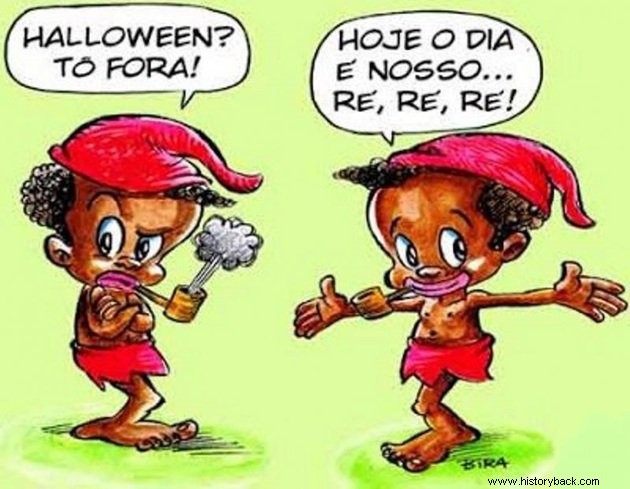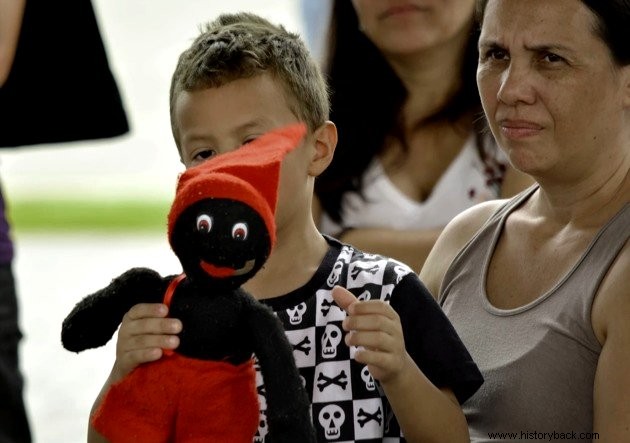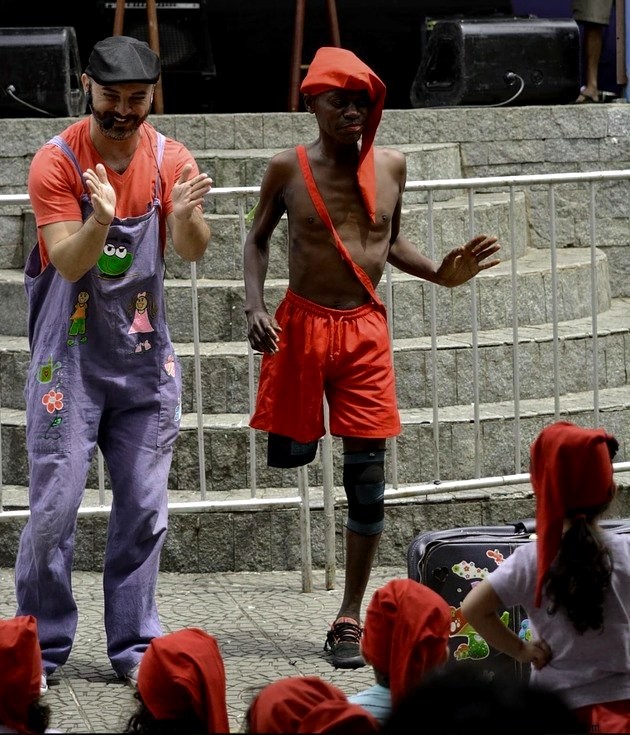Saci Day is celebrated on October 31 , the same day that Halloween is celebrated .
The date was created in 2003, with the aim of rescuing and valuing the folklore of our country, promoting national culture and Brazilian traditions.
The Saci-pererê is one of the most emblematic figures of Brazilian folklore and has indigenous and African influences.

Origin:How did Saci Day come about?
The Saci Day was created in 2003, through the Federal Law Project n.º 2,762 proposed by Deputy Aldo Rebelo. However, only later this date was made official.
In 2013, the Education and Culture Commission drafted Federal Law Project No. 2,479, which establishes October 31 as Saci's Day.
The proponents were Federal Deputy Chico Alencar and City Councilor of São José dos Campos Ângela Guadagnin.
Check out excerpts from Bill No. 2,479, of 2003:
However, in the state of São Paulo, the Saci Day had already been made official in 2004 through State Law No. 11,669.
On that day, many educational institutions in the country propose activities related to this folkloric figure.
The idea is to spread the history of Brazilian folklore, since many do not know the legends that surround the imagination of our country.
Despite the initiative, Saci's Day is still not widely celebrated by Brazilians.
Activities for Saci's Day
Since the official date in Brazil, schools usually hold events related to the figure of Saci.
Among the proposed activities, we suggest:
- Making a Saci doll;
- Making red hats;
- Reading legends;
- Theatrical performances;
- Games:hunt for Saci, create horsehair with wool and set up a circuit with them to see who is the fastest to tie them;
- Sing songs.


Music by Saci-pererê
Music by Saci Pererê:Turma do FolkloreSaci Day and Halloween
Behind its creation, Saci's Day reveals a response to the discomfort that many people feel in relation to the celebration of Halloween .
Note that Halloween (Halloween) is a traditional festival that takes place in several Anglo-Saxon countries, especially in the United States.
It is a party that began to be disseminated in Brazil many years ago. The main responsible were the American cinema and language schools, which began to publicize the date.
Thus, Saci Day appears in opposition to the culture of English-speaking countries. For this reason, the date chosen was October 31, the same day that Halloween is celebrated. in different parts of the world.
Check out an excerpt from Bill No. 2,479, of 2003:
Legend of Saci-pererê
According to legend, Saci-pererê is a very cunning and very mischievous black boy.
Among the main pranks, Saci likes to tie horses' manes and tails, confuse people and animals with whistles, make things disappear and change salt containers for sugar in kitchens.
Characteristics of Saci-pererê
Discover the main features of Saci.
- It has one leg.
- Wears a red hat.
- Smokes a pipe.
- Usually travels within a whirlpool.
- Practice lots of pranks.
Fun facts about the Saci-pererê
- Monteiro Lobato, one of the greatest children's writers in Brazil, was one of those responsible for spreading the legend of Saci, with the book collection “Sítio do Pica-pau Amarelo”.
- Saci's character gained space on the small screens with a program of the same name from Monteiro Lobato's book collection, and with drawings inspired by national folklore.
- The city of Botucatu, in the interior of São Paulo, is considered the national capital of Saci. In it is located the National Association of Saci Creators (ANCS), whose main purpose is to promote this folkloric figure.
- In São Luiz do Paraitinga, São Paulo, the Society of Saci Observers (SOSACI) was created. It is an organization whose objective is to value Brazilian popular culture by encouraging the development of projects that promote its dissemination.
Folklore Quiz
7Graus Quiz - Quiz | How much do you know about Brazilian folklore?Want to know more about folk legends? Be sure to read the texts below!
Legend of Saci-pererê
Legends of Brazilian Folklore
